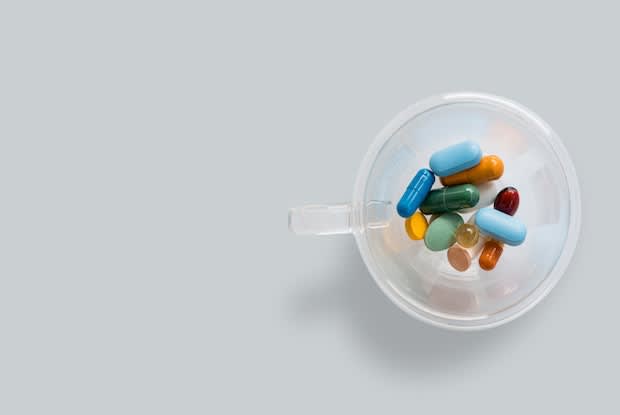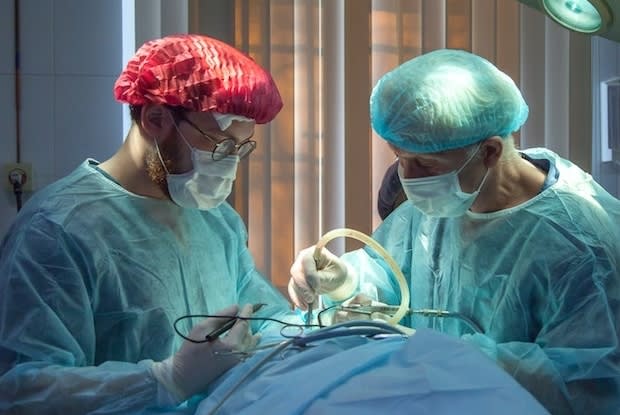Table of Contents
I. An Overview of COPD Treatments
III. Oral Steroids, Inhibitors, and Antibiotics
An Overview of COPD Treatments
Chronic obstructive pulmonary disease (COPD) is a chronic lung disease that causes breathing difficulty, mucus production, and wheezing. COPD is a progressive disease, which means it worsens over time. COPD involves obstructed airflow to the lungs that cause inflammation and often occurs due to long-term exposure to cigarette smoke or other irritating gases. [1]
Mild forms of COPD are mainly addressed by quitting smoking and reducing exposure to hazardous workplace environments. To treat the symptoms of more advanced stages of COPD, your doctor may prescribe Stiolto Respimat, ipratropium/albuterol inhaler, Daliresp (roflumilast), or Atrovent (ipratropium). With the right treatment plan, you may be able to slow the progression of COPD, avoid complications like heart disease or lung cancer, and lead an active life. [2]
Inhalers
Different types of inhalers can be used to treat symptoms of COPD. The goal of inhalers is to reduce airway inflammation by relaxing the muscles around your airways. Inhalers can reduce coughing and shortness of breath. The types of inhalers include bronchodilators, inhaled steroids, or a combination of the two. [2]
Bronchodilators come in two types—short-acting and long-acting. For more severe cases of COPD, you may be instructed to use a short-acting bronchodilator before exercise. Long-acting bronchodilators are typically used daily. Corticosteroids are designed to lower inflammation in your body. Inhaled corticosteroid medications are sometimes used to reduce inflammation in your airways. Inhaled steroids may have side effects that include oral infections and bruising around the body. Some situations call for an inhaler that combines bronchodilator medication and corticosteroids. Upon diagnosis, your doctor will inform you which inhalers are an effective treatment for you. [2] Some people with COPD experience severe acute exacerbation, which are periods of severe COPD. In these situations, short courses of oral corticosteroids may be prescribed. These courses typically last around five days because long-term treatment with oral corticosteroids can have side effects like weight gain, diabetes, cataracts, osteoporosis, and increased susceptibility to infections. [2] Very severe cases of COPD may be treated with a medication called roflumilast. This drug is a phosphodiesterase-4 inhibitor, which is designed to reduce breathlessness and improve lung function. [3] Roflumilast can have side effects like weight loss and diarrhea. [2] Your COPD symptoms may become aggravated if you catch a respiratory infection. It is important to treat respiratory infections like pneumonia, influenza, and acute bronchitis with antibiotics to prevent your COPD from getting worse. [2] Along with the right medications, a well-rounded treatment plan will likely include lung therapy. Also called oxygen therapy, your doctor may decide that you need supplemental oxygen in your blood, and assign several devices to assist in delivering oxygen to your lungs. Oxygen therapy devices have evolved to become lightweight and portable, allowing you to use oxygen during errands or while you sleep. Oxygen therapy has been proved to extend life in COPD patients. [2] When medications are not enough to manage COPD symptoms, surgery is an option. There are three types of COPD surgery available. The first is called lung volume reduction surgery. As the name suggests, this form of surgery involves removing parts of damaged lung tissue from your upper lungs. Once there is more room in your chest cavity, the healthy lung tissue will have space to expand. Lung volume reduction surgery can improve your condition by allowing the diaphragm to work more efficiently. For patients with severe COPD, a lung transplant is also a viable option. It is possible for a lung transplant to improve your ability to breathe and lead an active life. The catch is that lung transplants require patients to meet very specific criteria. As a major operation, a lung transplant also carries inherent risks like organ rejection. The third type of COPD surgery available is a bullectomy. When the walls of the air sacs in your lungs are destroyed, large air spaces called bullae can form. Large formations of bullae can cause major breathing difficulty. A bullectomy is a procedure that removes bullae to improve lung function and airflow. [2] Knowing you have COPD can be disheartening, but there are things you can do to slow its progress. You can see a respiratory therapist to learn techniques for efficient breathing. Energy conservation methods, relaxation techniques, and the correct breathing position can offer relief when you are short of breath. At home, drinking plenty of water and using a humidifier can help clear mucus from your air passages. Even though physical activity can be strenuous with COPD, a regular exercise routine can strengthen your respiratory muscles. Staying active and eating healthy go hand in hand as both help to keep you at a healthy weight. Being at a healthy weight is essential for maximizing your lungs’ efficiency. Finally, avoid smoking, second-hand smoke, and other sources of air pollution to reduce lung irritation. [2] The content in this article is intended for informational purposes only. This website does not provide medical advice. In all circumstances, you should always seek the advice of your physician and/or other qualified health professionals(s) for drug, medical condition, or treatment advice. The content provided on this website is not a substitute for professional medical advice, diagnosis, or treatment.
Oral Steroids, Inhibitors, and Antibiotics

Ventilation Therapies
Surgery

What You Can Do
